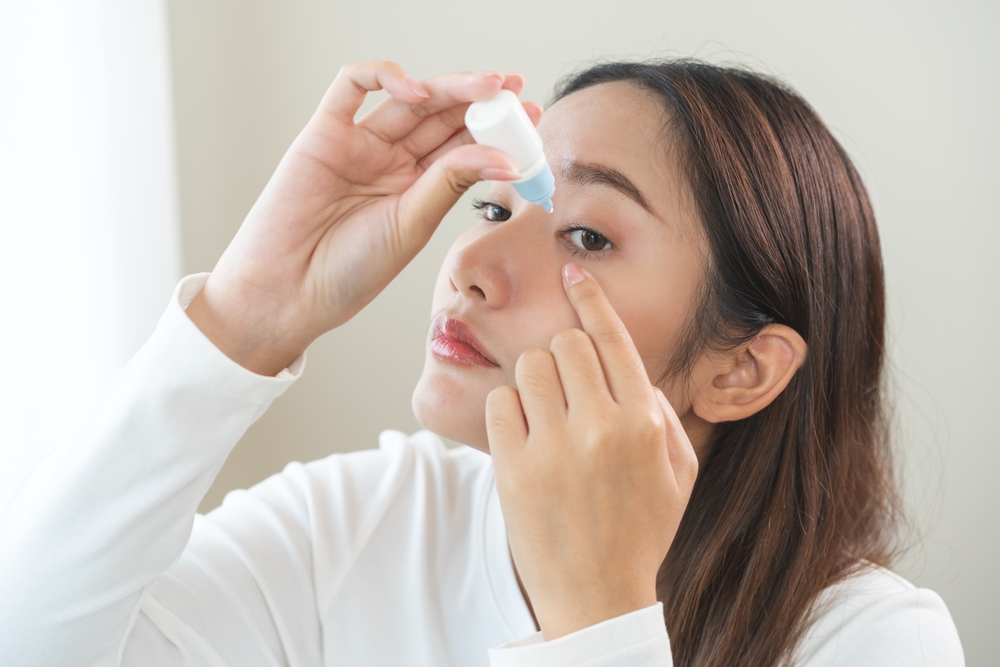Understanding Dry Eye: Causes, Symptoms, and Treatment Options

Understanding Dry Eye: Causes, Symptoms, and Treatment Options
Dry eye is a common and often chronic condition that affects millions of people worldwide. It occurs when your eyes don't produce enough tears or when the tears evaporate too quickly. This can lead to discomfort, vision problems, and even long-term eye damage if left untreated.
What is Dry Eye?
Dry eye is a multifactorial disease of the ocular surface characterized by a loss of homeostasis of the tear film, and accompanied by ocular symptoms, in which tear film instability and hyperosmolarity, ocular surface inflammation and damage, and neurosensory abnormalities play etiological roles. Dry eye is a chronic condition, which means it's a long-term problem that requires ongoing management.
Common Causes of Dry Eye
There are several factors that can contribute to the development of dry eye, including:
Age: As you get older, your eyes produce fewer tears, making you more susceptible to dry eye.
Gender: Women are more likely to develop dry eye, especially during hormonal changes like pregnancy, menopause, or while taking certain birth control pills.
Medications: Certain medications, such as antihistamines, decongestants, antidepressants, and blood pressure medications, can reduce tear production.
Environmental factors: Factors like wind, low humidity, and air conditioning can increase tear evaporation.
Medical conditions: Conditions like Sjögren's syndrome, rheumatoid arthritis, and thyroid disorders can contribute to dry eye.
Refractive eye surgery: Procedures like LASIK can sometimes disrupt the normal tear film, leading to dry eye.
Meibomian Gland Dysfunction (MGD): The meibomian glands are located along the edges of your eyelids and produce the oily component of your tears. When these glands become blocked or dysfunctional, it can lead to evaporative dry eye.
Blepharitis: Blepharitis is an inflammation of the eyelids, often caused by bacteria or a skin condition like seborrheic dermatitis. This can also disrupt the tear film and contribute to dry eye.
Understanding the underlying causes of your dry eye is an important first step in developing an effective treatment plan.
Recognizing the Symptoms of Dry Eye
The symptoms of dry eye can vary from person to person, but some of the most common include:
Burning, stinging, or irritated eyes
Redness
Sensitivity to light
Blurred vision
Feeling like there's something in your eye
Increased eye fatigue or discomfort
Stringy or thick mucus in or around the eyes
If you're experiencing any of these symptoms, it's important to see an eye care professional for a proper diagnosis and personalized treatment plan.
Diagnosis for Personalized Treatment Plans
To determine the best course of treatment for your dry eye, your eye doctor may perform a variety of diagnostic tests, including:
Tear film evaluation: This can include tests to measure the quantity and quality of your tears, as well as the tear film's stability.
Eyelid and meibomian gland assessment: Your provider may examine the health of your eyelids and meibomian glands to check for any blockages or dysfunction.
Ocular surface examination: This can involve the use of dyes or other techniques to assess the health and integrity of your eye's surface.
Based on the results of these tests, your eye care provider can develop a personalized treatment plan to address the specific underlying causes of your dry eye.
Treatment Options for Dry Eye
There are a variety of treatment options available for dry eye, and the best approach will depend on the underlying cause of your condition. Some of the most common treatments include:
Prescription Eye Drops: Your eye care provider may prescribe prescription eye drops to help increase tear production or reduce inflammation.
Intense Pulsed Light (IPL) Therapy: IPL therapy uses brief, high-intensity pulses of light to help unclog blocked meibomian glands and improve the quality of the tear film.
Low-Level Light Therapy (LLLT): LLLT, also known as photobiomodulation, uses low-intensity light to stimulate the meibomian glands and improve tear film quality.
TearCare: TearCare is a thermal pulsation system that uses a specialized device to heat and massage the eyelids, helping to unclog the meibomian glands.
LipiFlow: LipiFlow is a thermal pulsation system that uses a specialized device to apply heat and pressure to the eyelids, helping to unclog the meibomian glands.
MiBo Thermoflo: MiBo Thermoflo is a thermal pulsation system that uses a specialized device to heat and massage the eyelids, helping to unclog the meibomian glands.
Tyrvaya: Tyrvaya is a prescription nasal spray designed to treat the signs and symptoms of dry eye disease by stimulating natural tear production.
In some cases, your doctor may also recommend lifestyle changes, such as using a humidifier, avoiding smoke and wind, and taking breaks from digital devices, to help manage your dry eye symptoms.
Finding Relief for Your Dry Eye
Dry eye is a complex and often chronic condition, but with the right diagnosis and treatment plan, you can find relief and protect your eye health. By understanding the causes, symptoms, and the latest treatment options, you can work with your optometrist to develop a personalized approach that works best for you.
If you're struggling with dry eye, Texas State Optical Spring can help. We utilize the latest diagnostic tools and treatment options to create a personalized plan to address the root causes of your dry eye and provide lasting relief. Visit our office in Spring, Texas, or call (281) 288-7026 to schedule an appointment to take the first step towards healthier, more comfortable eyes.


